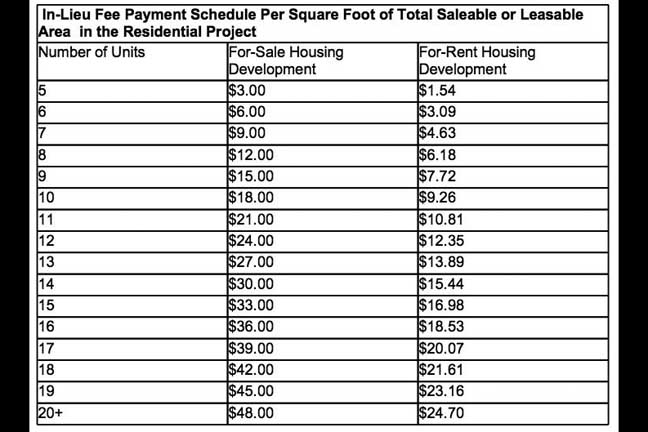Council okays second reading of “no fault” eviction ordinance
by Steven Felschundneff | steven@claremont-courier.com
The Claremont City Council had a light agenda for Tuesday’s meeting, a likely welcome change given all of the long meetings and late nights over the past few months. Even public comment, which has had a line out the door recently, was quiet.
The council did hear the second reading on its no fault eviction ordinance, which it passed by a 3-1 vote two weeks ago.
Lydia Hernandez who, with the help of her neighbors, kick started the entire no fault eviction ordinance process last fall, reminded the council the effort to protect Claremont’s many renters must continue.
“Thank you so much for the nine months of listening to us here and the dialogs that have taken place,” Hernandez said. “I would really like to thank [council members] Jed and Jennifer for really going to bat during the last meeting, having a lot of our views reflected but also portraying some of the counterpoints to things we had raised.”
She expressed concern that Claremont does not have a rental registry, which could provide valuable information about the rental market, including how much people pay in rent on average, who exactly are Claremont’s landlords, as well as assisting in enforcing the ordinance.
As passed and approved the new law will only apply to landlords with 10 or more units. Hernandez asked if in the future the law could be expanded to include small “mom and pop” landlords.
“Tenants shouldn’t receive different protections based simply on who owns the building in which they live,” Hernandez said.
Max Sherman of the Apartment Association of Greater Los Angeles, which represents landlords and property owners in the region, reiterated some of his organization’s objections to the new ordinance.
He expressed opposition to the increased relocation fees, which are three times what is provided under state law, and stated these fees have a disproportionate negative impact on landlords with fewer properties, who provide the most of the “natural occurring” affordable housing.
Sherman said substantial remodels are often looked at as vanity improvements, but many owners make significant upgrades to their properties to keep them safe and energy efficient. The concern, he said, is a landlord trying to make a property more livable might run into the spending caps or displacement rules in the ordinance which could deter owners from making these upgrades.
“We urge the City Council to further tailor the just cause ordinance to address the single issue of substantial remodels,” Sherman said, “and not increase the relocation fees for other types of no fault tenancy termination.”
“I want to restate that this is an ongoing conversation, and I look forward to that,” council member Jennifer Stark said.
The ordinance will become law of the land on June 22, 30 days after Tuesday’s second reading.
City updates fees for inclusionary housing ordinance
The council considered just one administrative item Tuesday, an update of the in-lieu fee schedule for Claremont’s Inclusionary Housing Ordinance.
The city passed a new inclusionary housing ordinance in 2021 to require developers of new rental and for sale housing to include 10% of the units for moderate- and 5% for low-income households.
Under certain circumstances the ordinance allows builders to pay a fee in lieu of offering affordable units in their projects. However, the city last updated the in-lieu fee schedule in 2014 well before it passed its new ordinance. As such it now must update the in-lieu fees charged on moderate-income for sale affordable units, as well as adding fee schedules for rental properties and low-income for sale units.
Claremont contracted with Keyser Marston Associates to update its fee schedule. Kathe Head, president of the company, provided an analysis during Tuesday’s meeting.
The ordinance passed in 2021 states a developer can elect to pay the in-lieu fee under three specific circumstances: first, the housing development includes either five or six units; second, the development has seven or more units and the City Council approves a developer’s request to pay the fee instead of providing the affordable units.
Finally, if calculating the number of affordable units required under the rules results in a fraction of a home, then the builder can pay a fee for the partial unit rather than change the number of residences in the project. For example, if a builder’s project has 56 homes it would be required to provide 8.4 affordable units. That developer could then pay a fee for the .4 unit rather than being forced to offer nine affordable units. This is the most common scenario in which a developer opts to pay the fee.
According to Alex Cousins, management analyst in the city’s community development department, inclusionary housing ordinances typically have a disproportionate impact on smaller projects, so the new fee is based on a sliding scale.
This resulted in a dramatic decrease in the fee for smaller developments. For example, a building with five 1,500-square-foot units would have paid $132,000 under the old rules, but would only be levied $3 per saleable square foot under the new rules for a total of $22,500.
By contrast, under the new rules a 56-unit project with a total saleable area of 84,000 square feet would pay about $48 per square foot for a total fee of $4 million, compared with $1.5 million under the previous ordinance.
Cousins reiterated that such a large development would have to acquire council approval to pay the in-lieu fee and, up until now, no builder has taken that option.
The fee for rental developments starts at $1.54 per square foot for five units and goes up to $24.70 for 20 or more units. Projects with four or fewer residences are exempt from the inclusionary housing ordinance.
The council passed the fee scale update 4-1, with Corey Calaycay voting no.









0 Comments